Laboratory reagent types and applications
07 Aug


Types of Laboratory Reagents
1. Buffers
- Examples: Phosphate-buffered saline (PBS), Tris buffer, Acetate buffer
- Applications: Used to maintain stable pH conditions in biological and chemical experiments, crucial for enzyme reactions, cell culture, and electrophoresis.
2. Solvents
- Examples: Water, Ethanol, Methanol, Acetone, Dimethyl sulfoxide (DMSO)
- Applications: Used to dissolve solutes, extract compounds, and prepare solutions. Solvents are essential in chromatography, spectroscopy, and sample preparation.
3. Acids and Bases
- Examples: Hydrochloric acid (HCl), Sulfuric acid (H₂SO₄), Sodium hydroxide (NaOH), Ammonium hydroxide (NH₄OH)
- Applications: Used for pH adjustment, titrations, chemical synthesis, and cleaning laboratory glassware.
4. Indicators
- Examples: Phenolphthalein, Methyl orange, Bromothymol blue
- Applications: Used in titrations to indicate the endpoint of a reaction by changing color. Indicators are also used to determine pH levels.
5. Stains and Dyes
- Examples: Coomassie Brilliant Blue, Crystal violet, Ethidium bromide, Hematoxylin
- Applications: Used for staining cells, tissues, and proteins in microscopy and gel electrophoresis. Stains help visualize and differentiate components under a microscope or in gels.
6. Enzymes
- Examples: Taq polymerase, Restriction enzymes, Lysozyme, Protease
- Applications: Catalyze biochemical reactions, used in molecular biology for PCR, DNA cloning, protein digestion, and various assays.
7. Antibodies
- Examples: Primary antibodies, Secondary antibodies
- Applications: Used in immunoassays like ELISA, Western blotting, immunofluorescence, and flow cytometry to detect specific proteins or antigens.
8. Salts and Ionic Compounds
- Examples: Sodium chloride (NaCl), Potassium chloride (KCl), Magnesium sulfate (MgSO₄)
- Applications: Used to create ionic solutions, maintain osmotic balance in cell culture, and as components in buffers.
9. Substrates
- Examples: ONPG (o-nitrophenyl-β-D-galactopyranoside), ATP (adenosine triphosphate)
- Applications: Used in enzyme assays to measure activity by providing a specific molecule that the enzyme can act on.
10. Nucleotides and Nucleosides
- Examples: dNTPs (deoxynucleotide triphosphates), ATP, GTP, CTP
- Applications: Building blocks for DNA and RNA synthesis in PCR, sequencing, and other molecular biology techniques.
11. Detergents and Surfactants
- Examples: SDS (sodium dodecyl sulfate), Triton X-100, Tween 20
- Applications: Used for cell lysis, protein solubilization, and membrane protein studies. Detergents help break down cell membranes and solubilize proteins.
12. Chelating Agents
- Examples: EDTA (ethylenediaminetetraacetic acid), EGTA (ethylene glycol-bis(β-aminoethyl ether)-N,N,N',N'-tetraacetic acid)
- Applications: Used to bind metal ions, preventing their interference in biochemical reactions. Chelating agents are essential in DNA extraction and protein purification.
13. Reducing and Oxidizing Agents
- Examples: DTT (dithiothreitol), β-Mercaptoethanol, Hydrogen peroxide (H₂O₂)
- Applications: Used to maintain reducing conditions in protein studies, break disulfide bonds, and induce oxidation reactions.
14. Standards and Controls
- Examples: Calibration standards for HPLC, qPCR standards, Protein molecular weight markers
- Applications: Used to ensure accuracy and reproducibility in quantitative analyses by providing reference points.
15. Gases
- Examples: Oxygen, Nitrogen, Carbon dioxide, Argon
- Applications: Used in gas chromatography, cell culture incubators, and as carrier gases in analytical instruments.
Applications of Laboratory Reagents
1. Molecular Biology
- DNA/RNA extraction and purification
- PCR and qPCR
- Cloning and sequencing
- Gel electrophoresis
2. Biochemistry
- Protein purification and analysis
- Enzyme assays
- Western blotting
- Chromatography
3. Cell Biology
- Cell culture and maintenance
- Transfection and transformation
- Flow cytometry
- Immunofluorescence
4. Microbiology
- Media preparation
- Antibiotic testing
- Staining and microscopy
- Microbial culture and identification
5. Analytical Chemistry
- Titrations
- Spectroscopy (UV-Vis, IR, NMR)
- Chromatography (HPLC, GC)
- Mass spectrometry
Conclusion
Laboratory reagents are integral to the successful execution of scientific experiments and analyses. Their proper selection and use are critical for obtaining accurate and reliable results across various fields of biological and chemical research.

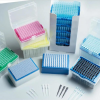
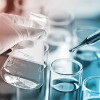
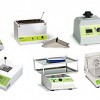

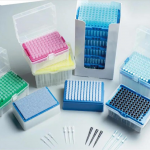
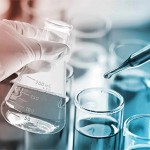







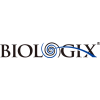
Leave a Comment